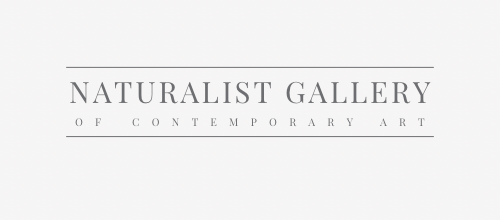Featured Image: Anselm Kiefer (1983) To the Unknown Painter
Texture, one of seven elements of art, enriches the sensory experience and adds depth to visual compositions.
Texture in art engages touch and sight, enriching artworks with tactile sensations and visual depth. It's a key element artists use to evoke emotions, create contrasts, and enhance narratives.
This comprehensive guide explains the multifaceted aspects of texture, its significance in art, and the various techniques artists employ to master its expressive potential.
Explore our curated selection of contemporary artists from around the globe.
Naturalist Gallery offers artist representation internationally. Apply your art.
Defining Texture:

Alberto Giacometti (1960) Walking Man
Texture encompasses both the tactile sensation and visual appearance of a surface. Whether rough or smooth, coarse or refined, textures evoke emotions and engage our senses. The terminology used to describe texture, such as rough, soft, glossy, and smooth, reflects its diverse manifestations.
Texture in Different Dimensions
Frida Kahlo (1940) Self-Portrait with Thorn Necklace and Hummingbird
In three-dimensional artworks, texture pertains to how an object physically feels when touched. Conversely, in two-dimensional creations like paintings, texture involves the visual perception of how the artwork might feel. This duality adds layers of meaning and interaction within the artistic realm.
Utilizing Texture: Purpose and Impact
Artists strategically deploy texture to achieve various objectives:
-
Contrast and Balance: Texture creates dynamic juxtapositions, heightening visual interest and harmonizing compositions.

Georges Seurat (1884-1886) A Sunday Afternoon on the Island of La Grande Jatte
-
Focal Points: Employing texture in specific areas draws viewers' attention, emphasizing key elements.

Grant Wood (1930) American Gothic
-
Stylistic Choices: Texture contributes to an artwork's overall style, conveying authenticity and emotion.

Jackson Pollock (1950) Autumn Rhythm (Number 30)
-
Depth and Immersion: By manipulating textures, artists generate visual depth, making the artwork more immersive.

Vincent van Gogh (1889) The Starry Night
Diverse Types of Texture in Art
-
Actual Texture: This tangible texture is experienced through touch, arising from the use of real materials. Techniques like sanding, polishing, or altering materials influence the actual texture. Examples include stone sculptures, wood carvings, and textured ceramics.

Barbara Hepworth (1968) Two Figures -
Implied Texture: In two-dimensional art, implied texture simulates tactile sensations. Techniques such as brushstrokes, impasto painting, and lighting adjustments create visual illusions of textures. Portrait paintings often utilize implied texture to depict skin's smoothness or wrinkles.

Leonardo da Vinci (1503) Mona Lisa -
Functional Texture: Often found in design, functional texture prioritizes the tactile experience. Textiles in clothing, chosen for comfort, warmth, or durability, exemplify functional texture.

Philippe Starck (2002) Louis Ghost Chair
The Significance of Texture in Artistic Expression
Texture profoundly influences an artwork's emotional resonance and interpretive possibilities. The interaction between texture and subject matter generates diverse meanings. For instance, a rose painted on smooth paper and carved on weathered wood evoke contrasting emotions and interpretations, enhancing artistic depth.

Robert Rauschenberg (1955) Bed
Experimenting with Texture: Techniques and Exploration
Artists can explore a wide array of textural effects by experimenting with techniques and materials:
-
Varied Application: Applying paint with sponges, spatulas, and even hands results in diverse textures.

Helen Frankenthaler (1952) Mountains and Sea
-
Surface Diversity: Different surfaces like fabric, wood, and stone offer unique textural outcomes.

Keith Haring (1982) Untitled
-
Mixed Media: Incorporating materials like sand, plastic, or rubber adds tactile complexity.

Jean Dubuffet (1954) The Cow with the Subtle Nose
-
Adjective Exploration: Encourage creative thinking by associating adjectives with images or scenes, guiding artistic textural choices.

Wayne Thiebaud (1963) Three Machines
Texture as an Element of Art: A Holistic Approach
Understanding texture's role in art contributes to stronger drawings and paintings. Texture's complex interplay with values enhances the illusion of tactile sensations. Mastery of texture empowers artists to amplify emotional engagement and communicate profound narratives.
Texture transcends the visual realm, elevating art to a multisensory experience. Its interwoven relationship with composition, meaning, and emotion highlights its indispensable role in the artist's creative palette. By skillfully manipulating texture, artists imbue their creations with captivating depth and invite viewers to embark on a tactile journey of discovery.
Further Exploration
Pablo Picasso (1942) Bull's Head
View limited edition prints by contemporary artists at Naturalist Gallery.
For a deeper understanding of the elements of art and their transformative potential, consider exploring our comprehensive guides for the other elements listed below. This series delves into texture, as well as other vital elements like line, color, form, value, and space. Each element contributes distinctively to the vibrant tapestry of artistry, fostering a deeper appreciation of the art world's captivating complexities.
Cindy Sherman (1984) Untitled Film Still #30
You may also find the following articles helpful:
Form: Understanding Dimensionality
Tone in Art: Understanding Color Value
Line: Types, Techniques, Element of Art
How to Get Your Work in an Art Gallery


